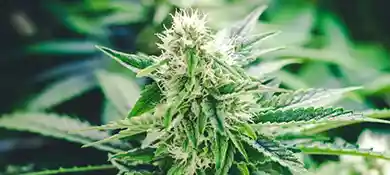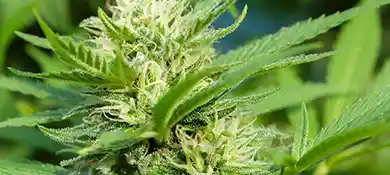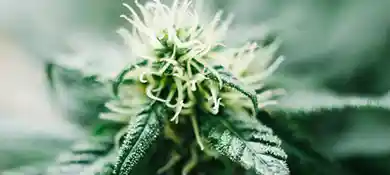From Germination to Harvest: A Step-by-Step Guide to Indoor Grow Facilities Success
In today's world, cannabis cultivation is growing in popularity, and mastering indoor grow facilities is crucial. The secret to success is designing and fine-tuning these facilities to meet the various needs of cannabis plants during their different growth stages, including the harvesting process. As a result, cultivators can achieve impressive growth with the right approach and ensure a plentiful, top-quality harvest.
In this post, we'll delve into the world of indoor grow facilities, discussing the essential shared facilities, the unique requirements for each growth stage, and the harvesting process. Cultivators can significantly improve their chances of success by understanding the specific needs of each step and using the right strategies.
Join us on this journey as we dive into indoor cannabis cultivation together. Remember, you can quickly jump to the sections that interest you most in this blog post.
Essential Equipment for Optimizing Indoor Grow Facilities
In the previous blog, we explored "commercial grow room design plans" and discovered that a typical grow room is divided into the following four rooms: mother room, clone room, veg room, and flower room.
Now, let's dive deeper into the common indoor growing facilities needed for each room and understand their importance in a well-functioning indoor cultivation environment.
Climate Control Systems
Climate control systems are crucial for indoor grow facilities because they help create the perfect environment for cannabis plants during their growth stages. By managing temperature, humidity, and air circulation effectively, these systems encourage healthy plant development while preventing potential problems like mold, pests, and diseases.
Types of Climate Control Equipment
There are several types of climate control equipment commonly used in indoor grow facilities:
1. Grow Room HVAC System
Grow room HVAC system is the latest technology to deliver the most precise temperature and humidity control for grow room. It answers every one of your most critical growth room requirements, providing the most space-efficient, energy-efficient, and cost-effective solution possible. And this all-in-one HVAC system is now popularly used for commercial grow room projects. Just visit this website https://altaqua.com/grow-room-hvac-system/ for more details.
2. Humidifiers and Dehumidifiers
These appliances help maintain optimal humidity levels by adding or removing moisture from the air, generally used for private grow or small grow room projects.
3. Fans and Air Circulation Systems
Proper air circulation is crucial for plant health, and fans help ensure fresh air is evenly distributed throughout the growing space.
4. Air Conditioning Units
Air conditioning units are primarily used to control the temperature only. However, they are the cost-effective solution for some smaller growth projects because of the investment limit.
5. Carbon Dioxide (CO2) Supplementation Systems
These systems can enhance plant growth by increasing CO2 levels in the growing environment.
6. Air Filtration and Purification Systems
Air filtration and purification systems are essential tools for creating a clean growing environment. They efficiently eliminate airborne contaminants, such as mold spores and pests, promoting a healthy space for plant development.
Importance of Maintaining Consistent Conditions
Maintaining consistent climate conditions in indoor grow facilities is essential for several reasons:
Optimal Growth: Cannabis plants thrive in specific temperature and humidity ranges. Consistent conditions allow plants to grow at their best and produce higher yields.
Pest and Disease Prevention: Fluctuating environmental conditions can create opportunities for pests and diseases to thrive. Keeping conditions stable helps to prevent these issues from arising.
Energy Efficiency: Consistent climate control can reduce energy consumption and costs by preventing the constant cycling of heating and cooling systems.
Easier Management: Maintaining a stable environment simplifies the process of monitoring and adjusting climate conditions as needed, allowing cultivators to focus on other aspects of their operation.
Lighting Systems
One of the most critical components of indoor grow facilities is the lighting system. Providing cannabis plants with the appropriate light spectrum and intensity throughout their various growth stages ensures healthy development and increased yields.
There are several types of grow lights commonly used in indoor grow facilities for cannabis cultivation:
Fluorescent Lights
These include compact fluorescent lights (CFLs) and T5 or T8 linear tubes. Fluorescent lights are energy-efficient and suitable for seedlings and early vegetative growth.
|
Pros |
Cons |
|---|---|
|
✓ Energy-efficient ✓ ELow heat output ✓ EIdeal for seedlings and early vegetative growth |
✕ Limited light intensity and penetration ✕ Not suitable for larger grow spaces or flowering stage |
High-Intensity Discharge (HID) Lights
HID lights consist of Metal Halide (MH) and High-Pressure Sodium (HPS) lamps. MH lights are perfect for the vegetative stage of plant growth, while HPS lights are more appropriate for the flowering stage.
|
Pros |
Cons |
|---|---|
|
✓ High light intensity and penetration ✓ Suitable for larger grow spaces |
✕ Higher energy consumption ✕ Produce more heat, requiring additional cooling solutions ✕ Separate MH and HPS lamps are needed for the vegetative and flowering stages |
Light Emitting Diode (LED) Lights
LED grow lights provide full-spectrum lighting while being energy-efficient. They are suitable for all growth stages of plants and boast a longer lifespan compared to other grow light options.
|
Pros |
Cons |
|---|---|
|
✓ Full-spectrum lighting ✓ Energy-efficient ✓ Longer lifespan ✓ Suitable for all growth stages |
✕ Higher initial investment ✕ Not suitable for larger grow spaces or flowering stageLight intensity may be lower than HID lights (depending on the specific LED model) |
Ceramic Metal Halide (CMH) Lights
Also known as Light Emitting Ceramic (LEC) lights, CMH lights are a type of HID light with a balanced spectrum suitable for both vegetative and flowering stages.
|
Pros |
Cons |
|---|---|
|
✓ Balanced spectrum for both vegetative and flowering stages ✓ Better color rendering and light quality than traditional HID lights |
✕ Higher initial investment ✕ Produce more heat than LED lights |
Choosing the right plant growth lights is crucial for a successful indoor growth facility. Fluence's LED growth lights are famous for their energy efficiency, full-spectrum lighting, and durability.
Irrigation and Nutrient Delivery Systems
Efficient irrigation and nutrient delivery systems are essential for providing cannabis plants with the water and nutrients they need throughout their lifecycle.
An efficient irrigation and nutrient delivery system is essential for maintaining optimal plant growth in indoor grow facilities. Proper watering and nutrient delivery ensure that cannabis plants receive the necessary elements for healthy growth, development, and maximum yields.
Different Irrigation Methods
There are several irrigation methods commonly used in indoor grow facilities for cannabis cultivation:
Hand-watering: This basic method involves manually watering each plant with a watering can or hose. While it provides control over the amount of water delivered, it can be labor-intensive and time-consuming for larger grow operations.
Drip irrigation: A drip system delivers water and nutrients directly to the root zone of each plant through emitters connected to a mainline. This method allows for precise control over the amount of water and nutrients delivered and minimizes water waste.
Ebb and flow: Also known as flood and drain, this method involves periodically flooding the plant trays or containers with nutrient-rich water and then draining it back into a reservoir. This ensures the plants receive adequate water and nutrients while promoting proper oxygenation of the root zone.
Aeroponics: In this method, water and nutrients are misted or sprayed directly onto the roots of plants suspended in the air. This allows for efficient nutrient uptake and oxygenation, promoting rapid growth and higher yields.
How to Tailor Nutrient Delivery to Each Growth Stage
Each growth stage of cannabis requires different nutrient concentrations and ratios for optimal growth. In the following sections, we will explore this issue in depth. You can also click here to quickly jump to the content you want to know.
Grow Medium and Containers
The choice of growing medium and containers can greatly impact the overall health and development of cannabis plants. Indoor grow facilities should be equipped with a variety of containers and grow mediums to accommodate the specific needs of each growth stage.
Commonly grown mediums include soil, coco coir, and hydroponic systems, while containers can range from small seedling trays to larger pots or hydroponic setups.
Adapting Indoor Grow Facilities for Each Stage
Now that we've covered the shared equipment needed for successful indoor cannabis cultivation, it's essential to understand the unique requirements of each growth stage and the harvesting process.
By adapting your indoor grow facilities accordingly, you can optimize your cannabis cultivation processes and achieve impressive results.
In this section, we will discuss the main factors to consider when creating an ideal environment for cannabis plants during germination, seedling, vegetative, flowering stages, and the harvesting process.
Germination - Preparing Indoor Grow Facilities for Sprouting
Germination is a vital stage in cannabis cultivation, as it lays the groundwork for the plant's growth and development. During this phase, seeds sprout and begin to form their root system.
To ensure successful germination, indoor grow facilities should be adequately prepared to meet the specific needs of sprouting cannabis seeds. Let's discuss the essential elements for germination:
Temperature and Humidity Monitors
Set up climate control systems to maintain a warm and humid environment (68-77°F and 70-80% humidity).
If you can introduce the grow room hvac system, that will be able to create stable, perfect conditions of temperature and humidity.
Fluorescent or LED Lights with Low Intensity
During germination, fragile cannabis seedlings need a low-intensity light source to avoid damage or stress. Fluorescent lights, such as T5 or T8 tubes, or low-intensity LED lights, are perfect choices for this stage.
Place these lights close to the seedlings, typically 4-6 inches above the growing medium, to ensure sufficient light exposure without generating too much heat.
Seedling Trays or Starter Plugs
Seedling trays or starter plugs provide a convenient and organized way to germinate multiple cannabis seeds at once. These trays or plugs are designed to hold individual seeds, allowing for easy monitoring and management of seedlings. They also help retain moisture around the seeds, promoting successful germination.
Humidity Domes
Humidity domes are clear plastic covers placed over seedling trays to maintain high humidity levels. Cannabis seeds need high humidity (around 70-80%) during germination to stay properly hydrated and prevent drying out. By using a humidity dome, you can create the ideal environment for germination and promote quicker sprouting.
Sterile Grow Medium
Using a sterile growing medium, such as rock wool, coco coir, or peat moss, is essential during germination. A sterile medium minimizes the risk of mold, pathogens, or pests harming the young seedlings. It also provides the necessary support and moisture retention for the developing root system.
Spray Bottles for Misting
Keeping the growing medium consistently moist is crucial for germination. Spray bottles are an excellent tool for gently misting the medium without disturbing the delicate seeds or seedlings. Make sure to use clean, filtered water to avoid introducing contaminants or pathogens to the germinating seeds.
Seedling - Supporting Young Plants in Indoor Grow Facilities
After germination, cannabis plants enter the seedling stage, where they develop their first sets of leaves and continue to establish their root systems. Proper care during this stage is essential for ensuring strong, healthy plants.
Here, we'll discuss the essential indoor grow facilities needed to support cannabis seedlings:
Climate Control Systems with Adjustable Temperature and Humidity Settings
During the seedling stage, cannabis plants need a specific temperature and humidity range for healthy growth. Climate control systems with adjustable settings enable you to tailor the environment to meet these requirements. Seedlings generally flourish at temperatures between 68-77°F (20-25°C) and humidity levels of 60-70%.
Using a standard air conditioner and dehumidifier is not recommended. Instead, a dedicated grow room HVAC system can achieve much better results.
Full-Spectrum LED or Fluorescent Lights with an 18-Hour Photoperiod
Seedlings need a consistent light source to encourage strong growth. Full-spectrum LED, or fluorescent lights provide the ideal light spectrum for this stage.
Set the lights on an 18-hour photoperiod to mimic natural daylight, ensuring the seedlings receive the necessary light exposure for proper development.
Drip Irrigation System
A drip irrigation system is a practical and efficient method for delivering water and nutrients to cannabis seedlings. This system provides consistent moisture to the plants, preventing over- or under-watering, and allows for precise control of nutrient delivery.
Mild Nutrient Solutions
Cannabis seedlings require a gentle, balanced nutrient solution to support their growth. Start with a mild nutrient solution specifically formulated for seedlings, and gradually increase the strength as the plants mature. Be careful not to overfeed, as young plants are sensitive to nutrient imbalances.
Larger Containers for Transplanting
As seedlings grow, their root systems will require more space to expand. Transplanting seedlings into larger containers ensures they have adequate room for root development and prevents them from becoming root-bound, which can stunt growth and reduce overall plant health.
PH and EC Meters for Nutrient Solution Monitoring
Monitoring the pH and electrical conductivity (EC) of your nutrient solution is crucial for maintaining a balanced and healthy environment for seedlings.
pH and EC meters allow you to accurately measure and adjust the acidity and nutrient strength of the solution, ensuring optimal nutrient uptake and preventing nutrient lockout.
Vegetative - Encouraging Strong Growth with Indoor Grow Facilities
Once cannabis plants transition from the seedling stage, they enter the vegetative phase. During this period, the focus is on promoting strong, healthy growth and developing a robust structure to support future flowering.
The following indoor grow facilities are essential to creating the optimal environment for this critical stage:
Climate Control Systems
Maintaining optimal temperature, humidity, and air circulation is vital for vegetative growth. Optimal temperature, humidity, and air circulation are crucial for the vegetative growth of your plants. Maintain a temperature between 70-85°F (21-29°C) and a humidity level of 40-60%. Using climate control systems with integrated air circulation features can help create a stable environment and prevent issues like mold and mildew.
A lot of commercial grow room projects have introduced the special grow room hvac system to create the perfect climate.
High-Intensity Full-Spectrum LED or HID Lights
During the vegetative stage, cannabis plants require high-intensity lighting to support vigorous growth. Full-spectrum LED, or HID lights, provide the broad light spectrum needed for healthy development. Both options deliver strong light output, but LED lights offer better energy efficiency and lower heat production.
Cannabis plants in the vegetative stage require an 18-hour photoperiod to encourage rapid growth. A consistent lighting schedule ensures that plants receive adequate light exposure to develop strong stems and leaves.
Nutrient Formulations for Vegetative Growth
Vegetative growth demands a specific balance of nutrients, with higher levels of nitrogen needed to support leaf and stem development. Select a nutrient formulation designed for vegetative growth and follow the manufacturer's guidelines for proper dosing.
Support Structures for Plant Training Techniques
Implementing plant training techniques, such as low-stress training (LST) or screen of green (SCROG), can improve light exposure and increase yield potential. Support structures like trellises or netting are necessary for these methods, providing a framework for plant manipulation and growth guidance.
Fans for Air Circulation and Carbon Dioxide Replenishment
Effective air circulation is essential for maintaining a healthy growing environment. Use fans to distribute fresh air evenly throughout the grow space and replenish carbon dioxide, promoting strong, vigorous growth and reducing the risk of pests and diseases.
For commercial grow rooms using high-quality HVAC systems, such as those from Altaqua, you can enjoy precise air circulation and carbon dioxide replenishment, creating the best-growing conditions for your plants.
Pest Control and Integrated Pest Management (IPM) Strategies
Preventing and managing pests is crucial for the success of any indoor grow facility. Implement an integrated pest management (IPM) strategy, including routine inspections, proper sanitation, and targeted treatments as needed to ensure a healthy and productive vegetative phase.
Flowering - Facilitating Bud Development in Indoor Grow Facilities
The flowering stage is the most crucial period in a cannabis plant's life cycle, as it's when the buds develop and mature. For a fruitful harvest, it's essential to create the optimal environment for bud development.
Here are the necessary indoor grow facilities for the flowering stage:
Climate Control Systems with Reduced Temperature and Humidity Settings
During the flowering stage, cannabis plants thrive in slightly cooler temperatures and reduced humidity levels. Aim for temperatures within the range of 65-80°F (18-26°C) and keep humidity levels around 40-50%. Proper climate control helps prevent mold and bud rot, protecting your harvest.
The grow room hvac system ensures precise temperature and humidity control during this critical stage, promoting healthy bud development and ultimately resulting in a higher-quality yield.
Full-Spectrum LED or HID Lights with Enhanced Red Wavelengths
Cannabis plants require a different light spectrum during the flowering stage, with an emphasis on red wavelengths to promote bud development. Full-spectrum LED, or HID lights that offer enhanced red output, are ideal for this stage, providing the necessary spectrum for robust flowering.
Switching to a 12-hour photoperiod triggers the flowering stage in cannabis plants. Maintain a consistent lighting schedule to ensure plants receive the appropriate amount of light exposure for optimal bud development.
Flowering-Specific Nutrient Formulations
During the flowering stage, cannabis plants require increased levels of phosphorus and potassium for bud development. Choose a nutrient formulation specifically designed for the flowering and follow the manufacturer's guidelines for proper dosing.
Monitoring Systems for Bud Development
Regularly monitoring bud development helps you identify any potential issues and make informed decisions about when to harvest. Use tools like magnifying glasses or microscopes to closely inspect buds for signs of maturity, such as changing trichome color.
Pest Control and Disease Prevention Measures
It's crucial to protect your plants from pests and diseases throughout the flowering stage. Continue using integrated pest management (IPM) techniques, including regular inspections, proper cleanliness, and targeted treatments, to ensure the safety and success of your yield.
Odor Control Systems
Cannabis plants produce strong odors during the flowering stage, which can be a concern for indoor grow facilities. Implement odor control systems, such as carbon filters or air scrubbers, to minimize odors and maintain a clean, fresh environment.
Harvesting - Preparing Indoor Grow Facilities for the Final Step
Although harvesting is not a growth stage, it is vital to adapt your indoor grow facilities for this crucial process to ensure the highest quality and potency of your cannabis buds.
Here are some essential tools and equipment you'll need to prepare for the harvesting process:
Magnifying Tools for Inspecting Trichomes and Pistil Development
To determine the ideal time to harvest your cannabis plants, use magnifying tools like jeweler's loupes, magnifying glasses, or handheld microscopes. These tools help you inspect trichomes and pistil development, allowing you to gauge the optimal maturity of your buds.
Bud Trimming Equipment
Proper trimming is essential for the appearance and quality of your cannabis buds. Equip your indoor grow facility with quality trimming tools like scissors, shears, or even automated trimming machines for larger operations. Choose the right tool based on the size of your harvest and your personal preference.
Dedicated Drying Racks or Hanging Lines
Drying your cannabis buds is a critical step in the harvesting process. Set up dedicated drying racks or hanging lines in a well-ventilated, dark space with controlled temperature and humidity. Proper drying helps to preserve the flavor, aroma, and potency of your buds.
Controlled Curing Spaces
Curing is a crucial final step in the harvesting process, significantly affecting the quality of your cannabis. Set up a controlled curing space, such as humidity-controlled containers or curing rooms, to maintain ideal humidity and temperature levels for optimal results.
Storage Containers for Cured Buds
After your cannabis buds are correctly cured, it's essential to store them in airtight containers to preserve their quality. Use glass jars, vacuum-sealed bags, or other airtight storage options to keep your cannabis fresh, potent, and aromatic for an extended duration.
Efficient Environmental Control by Using HVAC Systems
As mentioned above, there are many facilities that can control the indoor environment of growing plants. Worried about managing many devices for indoor environment control? Don't worry; HVAC systems offer a simple and effective solution.
HVAC stands for Heating, Ventilation, and Air Conditioning. It's an all-in-one approach for indoor cannabis cultivation. This system saves time, effort, and resources while providing your plants with the ideal conditions for growth.
Here are the key benefits of using an HVAC system in your indoor grow facilities:
- Easy management: HVAC systems handle heating, cooling, and air circulation. This makes it simpler to watch and adjust the environment when needed.
- Better efficiency: By integrating multiple functions into a single system, HVAC units consume less energy and reduce expenses.
- Stable climate: HVAC systems keep temperature and humidity steady. This helps plants grow well and lowers the chance of mold and pests.
- Custom settings: Many HVAC systems have advanced features like programmable settings and remote monitoring. This lets you set the right environment for each cannabis growth stage and harvest.
In short, an HVAC system makes environmental control easier and helps your indoor cannabis grow facility succeed. By using HVAC, you can focus on producing high-quality cannabis products.
Here are the recommended HVAC manufacturers for your reference;
1. Agronomic IQ: The best grow room hvac brand, offering advanced and energy-efficient grow room HVAC systems. Visit their website at https://agronomiciq.com/.
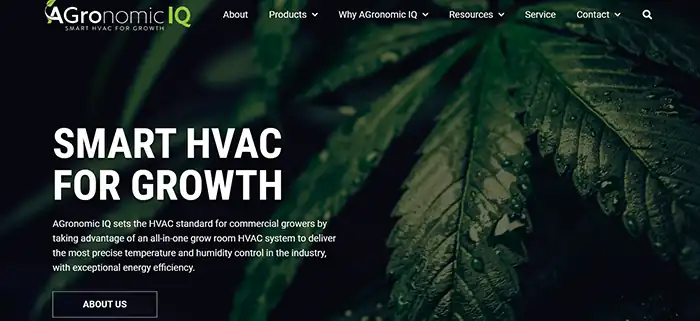
2. Surna: Specializes in climate control solutions for commercial indoor cannabis cultivation. Find out more at https://surna.com/.
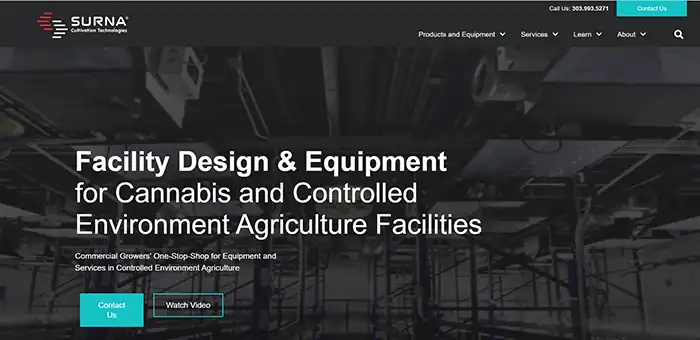

3. Altaqua: Providing very reliable and efficient HVAC systems designed for precision temperature and humidity control, one of the best choices for big commercial growth projects. Check them out at https://altaqua.com/.
Conclusion
By focusing on each stage's unique needs and investing in suitable equipment, you can maximize both yield and quality while minimizing potential issues. Break down the process into smaller steps, making it easier to manage.
Stay open to learning, adapting, and refining your techniques. As you grow in experience, your cannabis business will flourish. Keep moving forward, and enjoy the rewards of your hard work in the thriving world of cannabis
FAQ
1.What are some essential shared facilities in indoor grow facilities?
Some essential shared facilities in indoor grow facilities include climate control systems, lighting systems, irrigation systems, nutrient delivery systems, and pest control measures.
2.What are some key factors to consider when choosing plant growth lights for indoor grow facilities?
When choosing plant growth lights for indoor grow facilities, it's important to consider factors such as light intensity, spectrum, efficiency, and durability. LED lights are a popular choice due to their energy efficiency and customizable spectrum.
3.What are the advantages of using HVAC equipment in indoor grow facilities?
HVAC equipment provides accurate temperature and humidity control, which is essential for plant growth. It also helps maintain a stable environment and can be more efficient than using separate devices for heating, cooling, and air circulation.
Share with your friends:
Popular Blogs on Altaqua:
Get HVAC Brochure?
Get HVAC Brochure?
